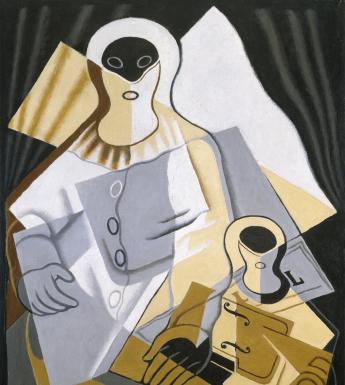The Intriguing World of Abstract Painting
Abstract painting is a form of art that defies conventional representation, inviting viewers to explore the depths of imagination and emotion. Unlike traditional art forms that aim to depict reality, abstract painting focuses on shapes, colors, and forms to convey a sense of the artist’s inner world.
One of the defining characteristics of abstract painting is its freedom from strict rules and boundaries. Artists use a variety of techniques, such as gestural strokes, geometric patterns, and spontaneous drips, to create compositions that are open to interpretation. This fluidity allows for a wide range of expressions and styles within the realm of abstract art.
Abstract painting often challenges viewers to look beyond the surface and engage with the artwork on a deeper level. By stripping away recognizable imagery, artists encourage contemplation and introspection, prompting viewers to connect with their own thoughts and emotions in response to the artwork.
Throughout history, abstract painting has been a source of innovation and experimentation in the art world. Pioneered by artists such as Wassily Kandinsky, Piet Mondrian, and Jackson Pollock, abstract art has evolved into a diverse and dynamic genre that continues to inspire artists and audiences alike.
Whether vibrant and energetic or subtle and contemplative, abstract paintings have the power to evoke a wide range of feelings and interpretations. Each brushstroke or splash of color carries meaning and emotion, inviting viewers on a visual journey that transcends traditional boundaries.
As we immerse ourselves in the intriguing world of abstract painting, we discover new ways of seeing and experiencing art—a world where imagination knows no limits and creativity reigns supreme.
Exploring the Benefits of Abstract Painting: Creativity, Innovation, Engagement, Expression, and Diversity
- Encourages creative interpretation and personal expression.
- Allows artists to explore innovative techniques and styles.
- Invites viewers to engage with art on a deeper, more introspective level.
- Provides a platform for artists to convey complex emotions and abstract concepts.
- Offers a diverse range of visual experiences, from vibrant and dynamic compositions to subtle and contemplative artworks.
Challenges and Limitations of Abstract Painting: Interpretation, Appeal, and Placement
- Abstract paintings can be challenging to interpret, leading to confusion or misinterpretation by viewers.
- Some people may find abstract art too unconventional or avant-garde, making it less appealing to a broader audience.
- The subjective nature of abstract painting can result in varying opinions on the quality and significance of the artwork.
- Abstract paintings may lack a clear narrative or message, leaving some viewers feeling disconnected or unengaged.
- Creating meaningful abstract art requires a deep understanding of artistic concepts and techniques, which can be daunting for novice artists.
- Abstract paintings may not always fit well with traditional home decor styles, limiting their potential placement in certain environments.
Encourages creative interpretation and personal expression.
Abstract painting, with its freedom from representational constraints, serves as a powerful platform that encourages creative interpretation and personal expression. By eschewing realistic depictions in favor of shapes, colors, and forms, abstract art invites viewers to engage with the artwork on a subjective level. This open-ended approach allows individuals to bring their unique perspectives and emotions to the forefront, fostering a deeply personal connection with the artwork. Through abstract painting, artists and viewers alike are encouraged to explore their creativity, embrace individuality, and express themselves in ways that transcend traditional artistic boundaries.
Allows artists to explore innovative techniques and styles.
Abstract painting offers artists the freedom to explore innovative techniques and styles, pushing the boundaries of traditional art forms. By breaking away from representational constraints, artists can experiment with unconventional methods of expression, such as layering, blending, and texture manipulation. This pro of abstract painting fosters a culture of creativity and originality, allowing artists to discover new ways of communicating their ideas and emotions through art. The endless possibilities within abstract painting inspire artists to constantly evolve their craft and challenge the norms of artistic expression.
Invites viewers to engage with art on a deeper, more introspective level.
Abstract painting offers a unique pro by inviting viewers to engage with art on a deeper, more introspective level. By stripping away recognizable imagery and focusing on shapes, colors, and forms, abstract art prompts viewers to look beyond the surface and connect with their own thoughts and emotions. This deeper engagement encourages contemplation and self-reflection, allowing individuals to explore the artwork’s meaning in relation to their personal experiences and perceptions. Abstract painting serves as a catalyst for introspection, fostering a profound connection between the viewer and the artwork that transcends traditional artistic boundaries.
Provides a platform for artists to convey complex emotions and abstract concepts.
Abstract painting offers a unique platform for artists to convey complex emotions and abstract concepts that may be challenging to express through traditional representational art forms. By utilizing shapes, colors, and forms in unconventional ways, artists can tap into the depths of their creativity to communicate nuanced feelings and ideas. This freedom from literal representation allows artists to explore the intricacies of human emotions, philosophical concepts, and personal experiences in a way that resonates with viewers on a profound and visceral level. In the realm of abstract painting, artists have the opportunity to delve into the intangible aspects of existence, creating visual narratives that speak volumes without uttering a single word.
Offers a diverse range of visual experiences, from vibrant and dynamic compositions to subtle and contemplative artworks.
Abstract painting offers a diverse range of visual experiences, catering to a wide spectrum of artistic preferences and emotional responses. From vibrant and dynamic compositions that exude energy and movement to subtle and contemplative artworks that invite quiet reflection, abstract art captivates viewers with its versatility and ability to evoke a myriad of emotions. Whether seeking a burst of color and excitement or a moment of introspection and tranquility, abstract paintings provide an endless array of visual stimuli that resonate with individuals in unique and personal ways.
Abstract paintings can be challenging to interpret, leading to confusion or misinterpretation by viewers.
Abstract paintings can present a conundrum for viewers due to their inherent ambiguity and lack of clear subject matter. The absence of recognizable imagery in abstract art can make it challenging for viewers to decipher the artist’s intended message or emotional expression. This ambiguity may result in confusion or misinterpretation, as viewers struggle to make sense of the abstract forms and colors presented before them. Without concrete references or visual cues, interpreting abstract paintings becomes a subjective and personal experience, leaving room for varied and sometimes conflicting interpretations among different viewers.
Some people may find abstract art too unconventional or avant-garde, making it less appealing to a broader audience.
While abstract painting offers a unique and innovative approach to artistic expression, some individuals may find it too unconventional or avant-garde, which can limit its appeal to a broader audience. The absence of recognizable imagery and the emphasis on subjective interpretation in abstract art may alienate viewers who prefer more traditional and representational forms of art. The unconventional nature of abstract painting challenges viewers to step outside their comfort zones and engage with art in a different way, which can be intimidating for those accustomed to more literal depictions. As a result, the inherent complexity and ambiguity of abstract art may create barriers for some individuals in fully appreciating its beauty and significance.
The subjective nature of abstract painting can result in varying opinions on the quality and significance of the artwork.
The subjective nature of abstract painting can lead to divergent opinions regarding the quality and significance of the artwork. Since abstract art often lacks clear representational elements, viewers may interpret the piece in vastly different ways based on their personal experiences, preferences, and perceptions. This diversity of viewpoints can result in conflicting assessments of the artwork’s artistic merit and impact, making it challenging to establish a universally agreed-upon standard for evaluating abstract paintings.
Abstract paintings may lack a clear narrative or message, leaving some viewers feeling disconnected or unengaged.
Some critics argue that a significant con of abstract painting is its potential to lack a clear narrative or message, which can result in certain viewers feeling disconnected or unengaged. Without recognizable imagery or explicit storytelling, abstract artworks may require viewers to invest more effort in interpreting and connecting with the piece. This ambiguity can be challenging for those who prefer art that conveys a specific message or storyline, leading them to feel alienated from the artwork and unable to fully engage with its deeper meaning.
Creating meaningful abstract art requires a deep understanding of artistic concepts and techniques, which can be daunting for novice artists.
Creating meaningful abstract art poses a significant challenge for novice artists due to the requirement of a profound comprehension of artistic concepts and techniques. The intricate nature of abstract painting demands a mastery of elements such as composition, color theory, and visual balance to effectively convey emotions and messages without relying on recognizable forms. Novices may find themselves overwhelmed by the complexity of abstract art, as it necessitates a departure from traditional representational methods and a willingness to experiment with unconventional approaches. Developing the skills and intuition necessary to produce compelling abstract artworks often requires dedication, practice, and a willingness to push artistic boundaries beyond conventional norms.
Abstract paintings may not always fit well with traditional home decor styles, limiting their potential placement in certain environments.
Abstract paintings may not always seamlessly integrate with traditional home decor styles, which can present a challenge when considering their placement in certain environments. The bold and unconventional nature of abstract art may clash with more classic or conservative interior design schemes, making it difficult to find the perfect setting where the artwork can truly shine. This limitation underscores the importance of thoughtful curation and design choices to ensure that abstract paintings are showcased in spaces that complement their unique aesthetic and enhance their visual impact.



